
|
Vol 72 |
Page 13 |
Privacy Policy | Editorial Policy | Profit Policy | Join the Association | List of Members | Contact us | Index | Links
Back Go to page: 1 2 3 4 5 6 7 8 9 10 11 12 13 14 15 16 17 18 19 20 Forward
|
Contents:
Australia's "obsolete" sub fleet. Release from Japanese POW Camp. Rudolph the red nosed reindeer. The toilet that sank the U-1206.
|
The Toilet that sank the U-1206.
On April 6, 1945, a German submarine named the U-1206 departed from the port city of Kristiansand, in Nazi-occupied Norway and began its first combat patrol. Assigned to the waters of the North Atlantic, its mission was to seek out and destroy British and American ships on the high seas.
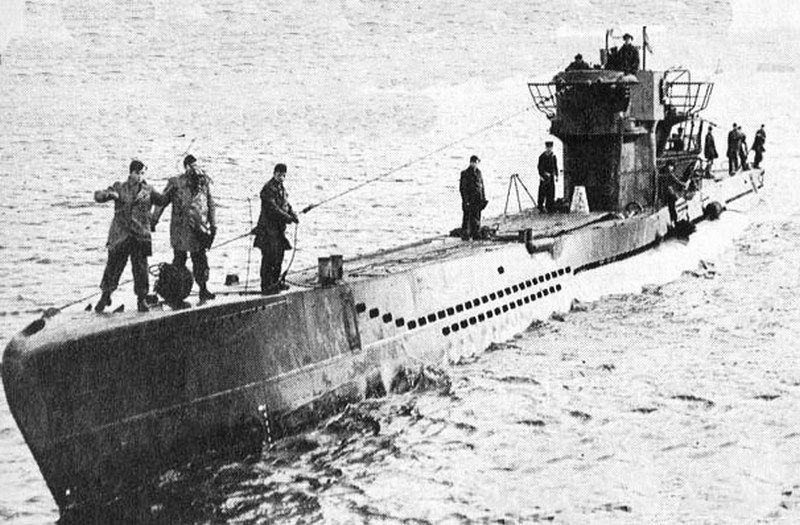
For the 50-man crew aboard submarines like the U-1206, life wasn’t just extremely dangerous, it was also very unpleasant: Quarters were cramped, and the bathroom/toilets were no exception. There were only two heads (toilets), and because one of the heads was right next to the galley, the space was often used to store food. When it was, the toilet was unavailable, meaning the entire crew had to share the remaining toilet.
Under pressure.
The plumbing on German subs of that era differed from American and British subs in one important respect: The German toilets discharged their contents directly into the sea, instead of in a holding tank. Not having such a tank saved precious space, but it came at a price. The toilets could only be used when the submarine was traveling on or near the ocean surface. When the submarine was submerged, the pressure outside the hull was too great for the toilets to be able to flush.
If nature called under such circumstances, crew members had to use buckets, tin cans, or whatever other containers they could get their hands on. They had to carefully store the contents of all those containers until the submarine surfaced, when they could be poured into the toilets and flushed, or taken topside and emptied into the sea.
The ventilation systems on World War II German subs were notoriously inadequate, which meant that even in the best of circumstances, the air was foul with diesel fumes, human body odour, and other smells. When the toilets were unavailable and all those buckets and cans were filling to overflowing with you-know-what, the stench was even worse.
Heads up!
The U-1206 had a new and improved plumbing system. Unlike many subs in the fleet, it had high-pressure toilets that could be used at greater depths than the standard heads could, but the new system was very difficult to operate. The toilets came with complicated instructions manuals and a few members of the crew had to be trained so that they could serve as toilet-flushing “specialists.”
Barely a week into the U-1206’s first patrol, Captain Karl Adolf Schlitt (who was commanding a sub for the first time), had to use the head while the sub was cruising at a depth of 200 feet, some eight miles off the coast of Scotland. Rather than request the assistance of the toilet specialist, Schlitt tried to follow the instructions in the manual to flush the toilet himself. Something went wrong and when Schlitt asked the toilet specialist for help, something went wrong again. The specialist opened the outside valve, the one that opened to the sea, while the inside valve was open, causing a torrent of water to flood into the sub.
What a gas.
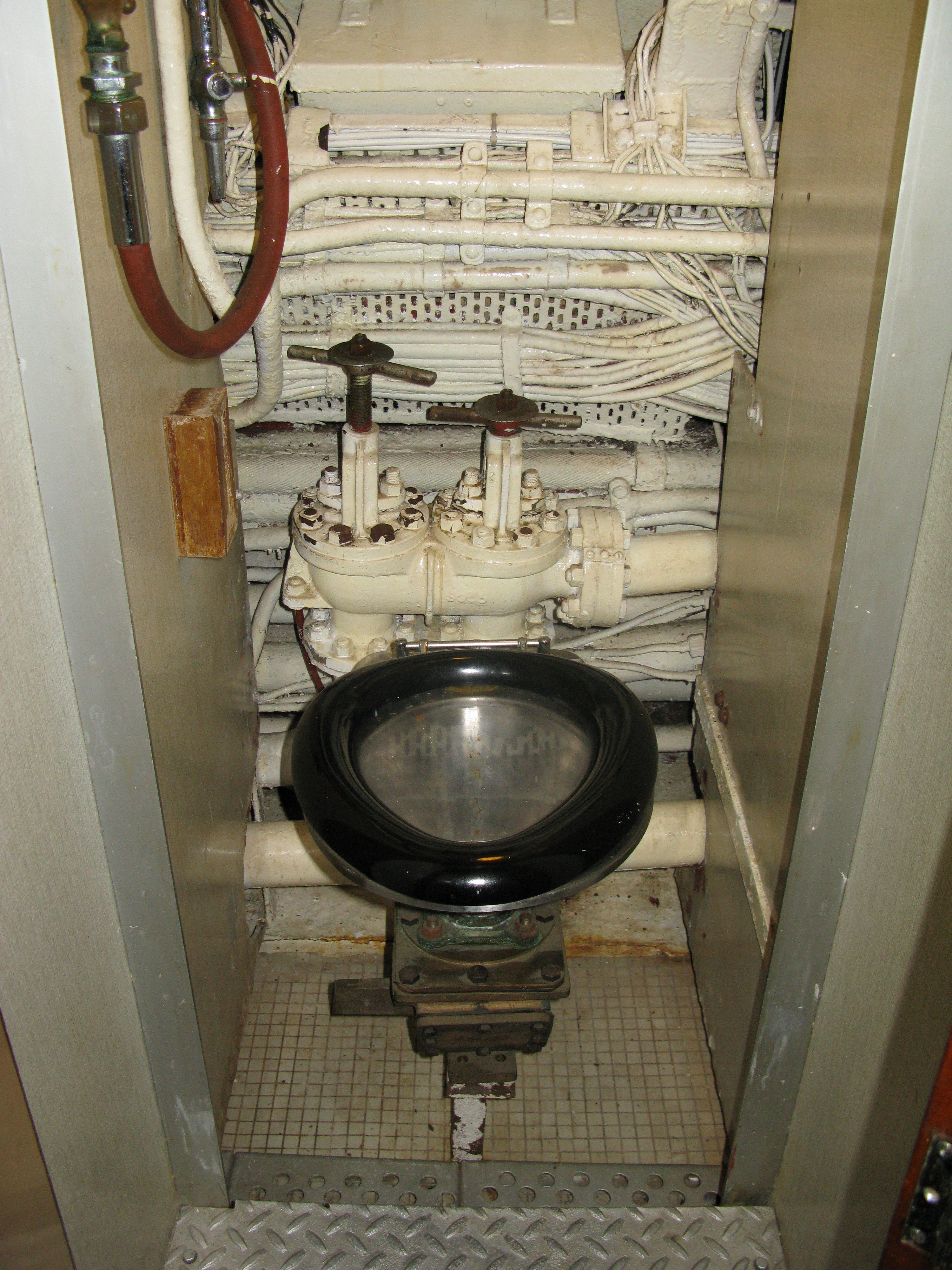
t was then that another flaw in the U-1206’s design became apparent. When the submarine is submerged, it runs on electric motors powered by a giant bank of batteries and the U-1206’s batteries were in a compartment directly below the malfunctioning toilet. The seawater quickly combined with battery acid and created deadly chlorine gas, which began to spread throughout the sub.
As the gas filled the submarine, Schlitt had no choice but to order the submarine to surface so that the gas could be vented and replaced with breathable air. Because they surfaced within sight of the Scottish coastline, they were quickly spotted by Allied aircraft and attacked. One crew member died in the melee that followed; three others fell overboard and drowned.
The U-1206 was badly damaged in the attack and could not dive. Seeing no way to save his submarine, Captain Schlitt ordered the crew into the lifeboats; then he scuttled the ship, making it the only warship in naval history to be doomed by its own malfunctioning toilet. Thirty-six members of the crew were rescued by small boats in the area; ten others made it to shore in their lifeboats and were captured.
Pot luck.
In its eight days on patrol, the U-1206 never did manage to attack any Allied ships. Not that it would have made any difference to the Nazi war effort, which had just three more weeks to go. On April 30, Adolf Hitler committed suicide in his Führerbunker in Berlin; seven days later, Germany surrendered and the war in Europe was over.
It’s possible that the toilet that sent the U-1206 to the bottom of the Atlantic may have saved the surviving 46 members of the crew. Though Winston Churchill later admitted that “the only thing that ever frightened me during the war was the U-boat peril,” by the summer of 1943 the Battle of the Atlantic had turned decisively in favour of the Allies, who were now able to sink U-boats faster than the Germans could replace them. The odds of a German submariner surviving the war were slim: 75% of the entire U-boat fleet was sunk during the war, and 30,000 of the submarine service’s 40,000 crew members went to a watery grave with them.
Thanks, perhaps, to a malfunctioning toilet, the U-1206’s 46 surviving crew members were not among them.
It’s weird being the same age as old people.
On the 15th August, 1945, Japan released me from a POW Camp. Then US Pilots saved my life.
It was noon on August 15th, 1945. The Japanese Emperor had just announced to his people that his country had surrendered unconditionally to the Allied Powers. To those of us being held at Ohashi Prison Camp in the mountains of northern Japan, where we’d been prisoners of war performing forced labour at a local iron mine, this meant freedom. But freedom didn’t necessarily equate to safety. The camp’s 395 POWs, about half of them Canadians, were still under the effective control of Japanese troops and so we began negotiating with them about what would happen next. (MacDonell arrowed below)
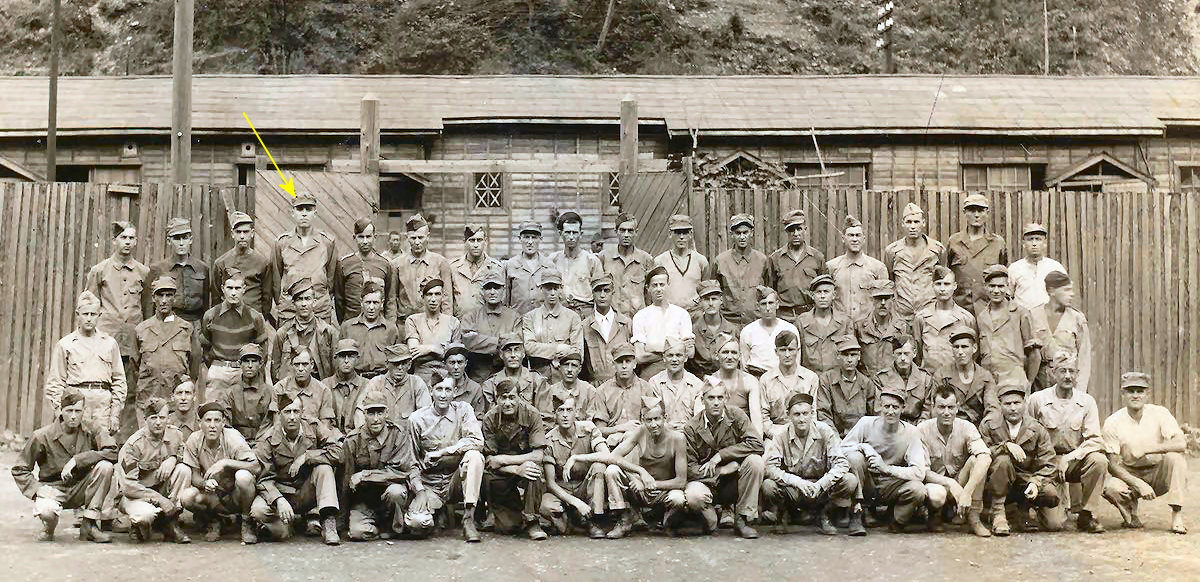
Complicating the negotiations was the Japanese military code of Bushido, which required an officer to die fighting or commit suicide (seppuku) rather than accept defeat. We also knew that the camp commander, First Lieutenant Yoshida Zenkichi, had written orders to kill his prisoners “by any means at his disposal” if their rescue seemed imminent. We also knew that we could all easily be deposited in a local mine shaft and then buried under thousands of tons of rock for all eternity without a trace.
We had no way of notifying Allied military commanders (who still hadn’t landed in Japan) as to the location of the camp (about a hundred miles north of Sendai, in a mountainous area near Honshu’s eastern coast), whose existence was then unknown. Because of the devastating American bombing, Japan’s cities had been reduced to rubble, its institutions were in chaos, and millions of Japanese were themselves close to starvation, much like us. The camp itself had food supplies, such as they were, for just three days.
Lieut. Zenkichi seemed angry, and felt humiliated by the surrender. Yet he appeared willing to negotiate our status. And after some stressful hours, we reached an agreement: The Japanese guards would be dismissed from the camp, while a detachment of Kenpeitai (the much feared Military Police) would provide security for Zenkichi, who would confine himself to his office.
To our delight, the local Japanese farmers were friendly, and agreed to give us food in exchange for some of the items we’d managed to loot from the camp’s remaining inventory, though, unfortunately, not enough to feed the camp. Meanwhile, through a secret radio (receiver) we’d been operating, we learned that the Americans were going to conduct an aerial grid search of Japan’s islands for prison camps. We followed the broadcasted instructions and immediately painted “P.O.W.” in eight-foot-high white letters on the roof of the biggest hut.
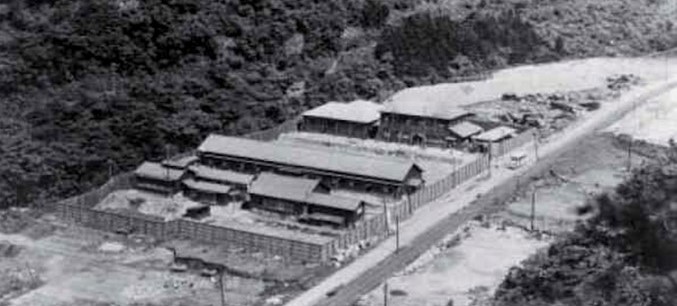
Two days later, with all of our food gone, we heard a murmur from the direction of the ocean. The sound turned into the throb of a single-engine airplane flying at about 3,000 feet. Then, suddenly he was above us, a little blue fighter with the white stars of the US Navy painted on its wings and fuselage, but the engine noise began to fade as he went right past us. Please, God, I thought, let him see our camp.
Then the engine sound grew stronger and changed its pitch as we heard the roar of a dive. The pilot had wrapped around a nearby mountain and came straight down the centre of the valley, his engine now bellowing wide open. From just over treetop altitude, he flew over the centre of the camp. We all went wild: Our prayers had been answered.
Then he climbed to about 7,000 feet while circling above us, we assumed he was radioing our location to base, before making another pass over the camp, as slowly as he dared, this time with his canopy back. He threw out a silver tin box on a long streamer that landed in the centre of the camp. Inside, we found strips of fluorescent cloth and a hand-written note: “Lieutenant Claude Newton (Junior Grade), USS Carrier John Hancock. Reported location.”
The instructions for the cloth strips were as follows: “If you want Medicine, put out M. If you want Food, put out F. If you want Support, put out S.” We put out “F” and “M.” Once more, Lieut. Newton flew over the camp, this time to read the letters we’d written on the ground. Waggling his wings, he headed straight out to sea to his floating home, the USS Hancock.
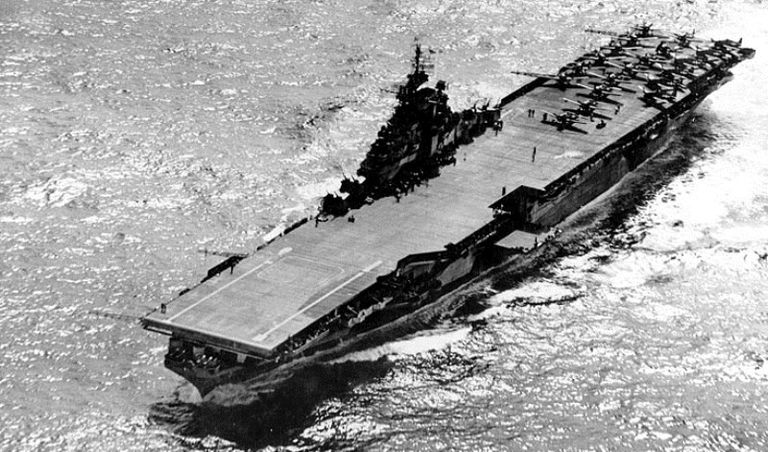
Seven hours later, two dozen airplanes approached the camp from the sea. They were painted with the same US Navy colours, but these were much larger planes, Grumman Avenger torpedo bombers with a crew of two. Each made two parachute cargo drops in the centre of our camp, leaving us with a ton or more of food and medicine. The boxes contained everything from powdered eggs to tins of pork and beans. There was also something called “Penicillin” that, I later learned, doctors had begun prescribing to infected patients in 1942. (Our camp doctor had understandably never heard of it.) That night, we had a feast and a party. Despite the doctor’s warnings not to overdo it, we did. The sudden calorie intake nearly killed us.
But it was one thing for the Americans to drop supplies and another thing to get to us. The days passed, until one sunny morning we had another aerial visitor from the east. He circled the camp and dropped a note: “Goodbye from Hancock and good luck. Big Friends Come Tomorrow.”
The “friends” arrived at about 10am the next day, and they were indeed big: four-engine B-29 Superfortresses. Like the Penicillin, this was something new: These planes hadn’t entered service till 1944, and none of us had seen one. Their giant bomb-bay doors opened and out came wooden platforms, each loaded with parachute-equipped 44-gallon drums. These were packed with tinned rations and other supplies, including new uniforms and footwear. None of this was lost on nearby Japanese villagers, who saw us POWs going from starvation to a state of plenty. Since our newfound wealth was scattered all over hell’s half acre, we asked these locals to bring us any drums they might find, which they did, in return for the nylon chutes (which local seamstresses and homemakers would put to good use) and a share of the food. That night, we had another party, except at this one, everyone was dressed in a new American uniform of his choice: Navy, Army, or Marine.
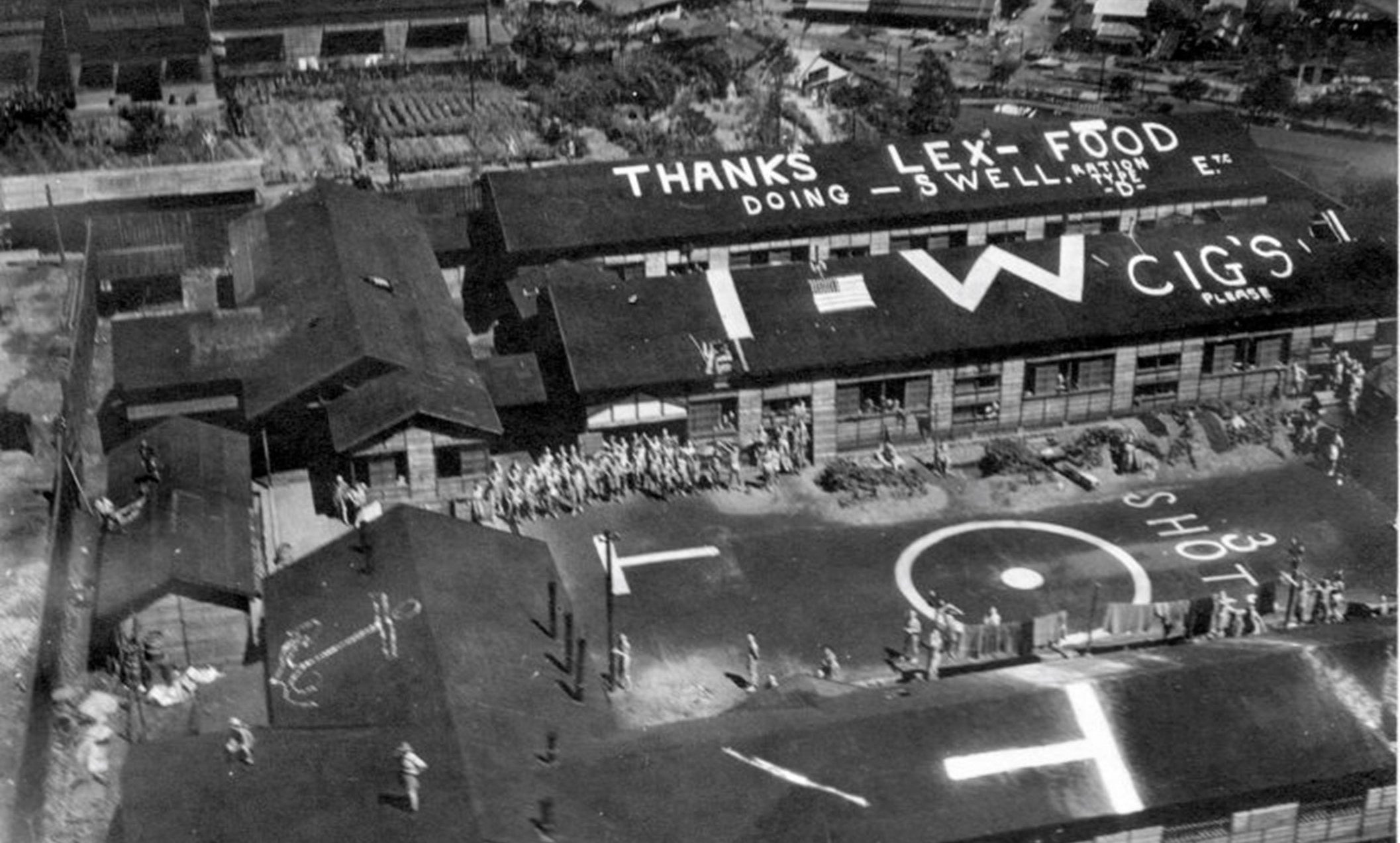
The next day brought another three lumbering aerial giants—from the Marianas Islands, it turned out. Again, the local Japanese residents helped us, amid much bowing, collect the aerial bounty. By now, the camp was beginning to look like an oil refinery, with unopened 44-gallon oil drums stacked everywhere.
When the daily ritual was repeated the day after that, some of the parachute lines snapped in the high winds, and the oil drums fell like giant rocks. Several hit the camp, went through the roofs of huts, hit the concrete floors and exploded. One was packed with canned peaches, and I don’t have to describe what the hut looked like. There were several very near-misses on our men, Japanese personnel and houses in the nearby village. When the next drop generated a similar result, I looked up to see that I was right under a cloud of falling 44-gallon oil drums. It was a terrifying moment and I imagined the bizarre idea of surviving the enemy, surviving imprisonment, and then dying thanks to the kindness of well-meaning American pilots.
We now had tons of food and supplies—enough for months and more was arriving. The camp had begun to look as if it had been shelled by artillery, so we painted two words on the roof: NO MORE! The next day, the big friends came from the Marianas and, as we watched from the safety of a nearby tunnel, they circled the camp and, without opening their bay doors, flew back out to sea, firing off red rockets to show they’d received the message.
It was a surreal scene. But it didn’t distract us from the fact that the generous and timely American response saved many of our lives. In the days that followed the drum showers, we settled down to caring for our sick and to some serious eating. Thanks to the US supplies, we began to gain a pound a day. The American generosity was especially notable given that few of the prisoners at Ohashi were American. Almost all were Canadian, Dutch, or British.
At about this time, I decided to go back to the nearby mine where we’d worked as prisoner labourers. I wanted to say goodbye to the foreman of the machine shop, a grandfatherly man who’d called me hanchō (squad leader) and had been as kind to me as the brutal rules of the country’s military dictatorship permitted. It was both joyous and sad. We were happy that the war was over, yet sad at the knowledge that this would be our last meeting. I promised him that I would take his earnest advice and return to school as soon as I got home. “Hanchō, you go Canada now,” he said.
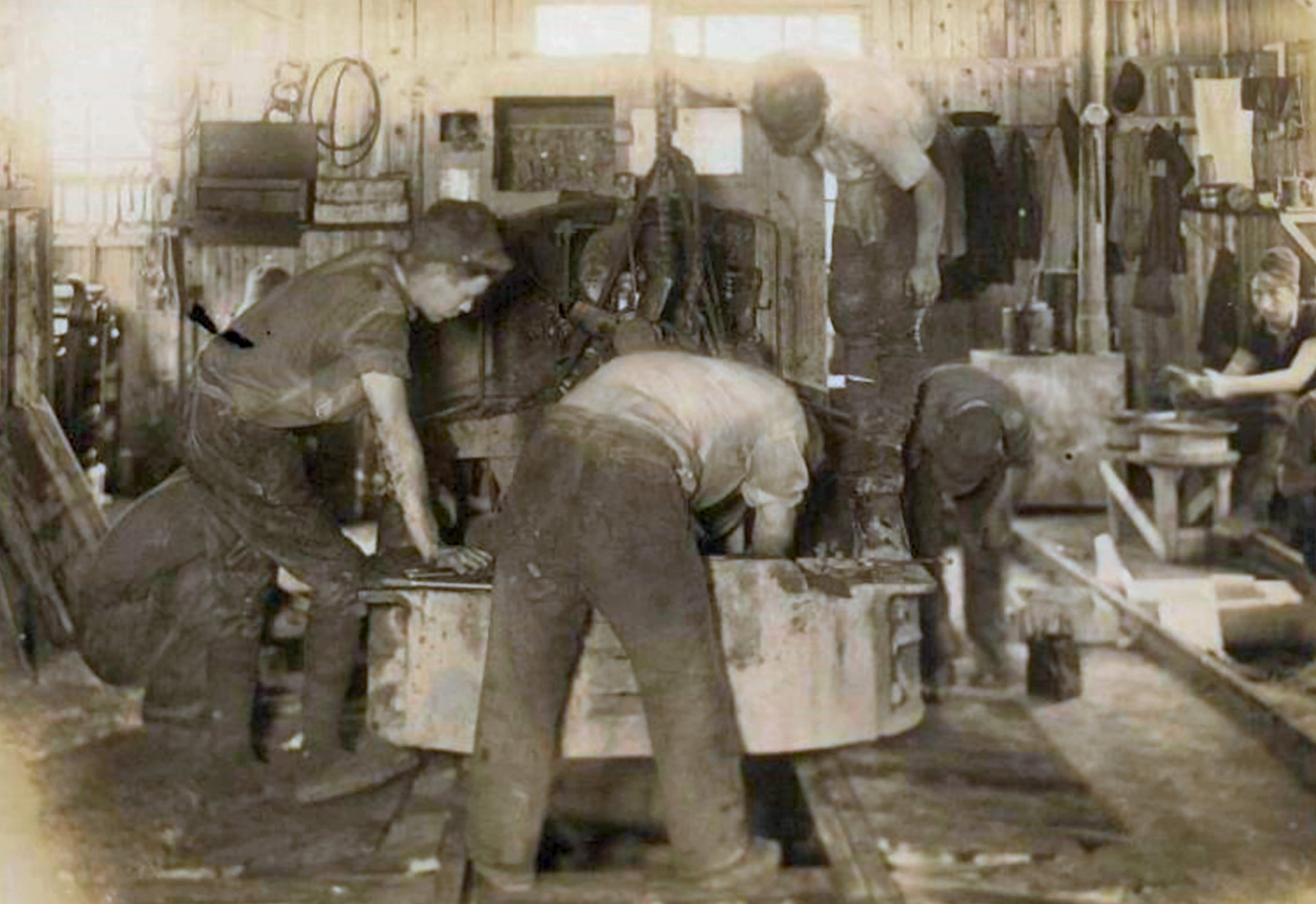
Mine workshop at Ohashi prison camp, where many POWs worked
I later learned that about three million Japanese soldiers and civilians lost their lives in the war. Millions more were left wounded. The country had been hit with two atomic bombs. Whole cities had been gutted by fire. At every level, the war had been an unmitigated disaster for Japan. Its people had become cannon fodder in a cruel and pointless project to conquer East Asia.
My fellow ex-POWs and I visited the camp graveyard and said one last goodbye to our comrades who’d found their last resting place so far from home. It was an unjust reward for such brave young men. And it was then that tears I couldn’t control welled up in my eyes and streamed down my cheeks.
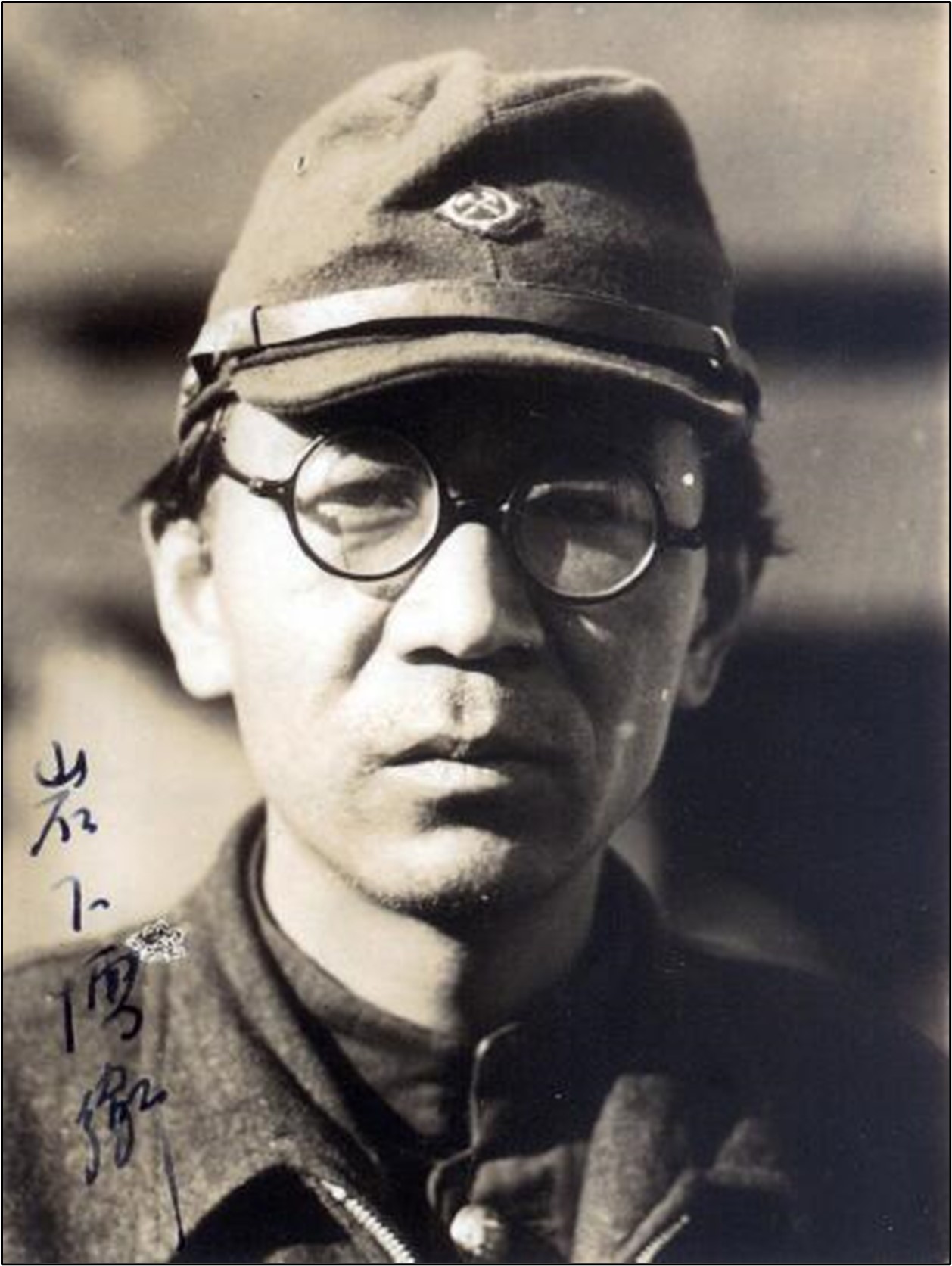
On the 14th September, 30 days after Emperor Hirohito had publicly announced Japan’s surrender, a naval airplane flew in from the sea and dropped a note to inform us that an American naval task force would evacuate us the following day. Sure enough, on the 15th September, landing craft beached themselves and hastily disgorged a force of Marines. Their motorized column sped inland to the Ohashi camp, led by a Marine colonel and armed to the teeth.
Interpreter Hiroe Iwashita, remembered fondly by many prisoners
These were veterans of the long Pacific campaign. They’d survived many terrible encounters with the Japanese in their westward campaign across the Pacific and they looked the part. After our captain saluted the colonel, they embraced, and the colonel told us how he planned to evacuate us, giving specific orders as to how it was all to be accomplished.
After he issued his orders, the Colonel asked, “Are there any questions?” Our captain said, “Yes, I have one. Sir. What in the hell took you so long to get here?” That at least brought a smile to those tough, weather-beaten Marine faces.
Following the Colonel’s instructions, we mounted up, said sayonara to Ohashi and, after almost four years of imprisonment, began the glorious journey home to our various loved ones. I was in the last vehicle that left the camp that day. And as we departed, I observed a compound that was now completely empty—save for one forlorn figure, who’d emerged from his office and now stood at the centre of a camp that once held 400 men. It was Lieutenant Zenkichi.
(1) George MacDonell was born in Edmonton, Alberta in 1922. He served in the Royal Rifles of Canada, which deployed to Hong Kong in 1941 as part of C-Force, shortly before Hong Kong’s capture by the Japanese army. More information about his story may be found HERE and HERE.

In for a penny, in for a pound: $90 billion for an obsolete submarine fleet.
Brian Toohey
So much for Australian sovereignty. We are locked out of repairing key US components of our subs’ computer systems and the Coalition has committed our submarine fleet to the extraordinarily dangerous role of helping the US conduct surveillance in the South China Sea.
It is hard to believe that a government genuinely committed to defending the nation would sign a contract to buy 12 ludicrously expensive submarines that would not be operational for at least 20 years, with the final submarine not ready for nearly 40 years. The fleet will be obsolete before its delivered.
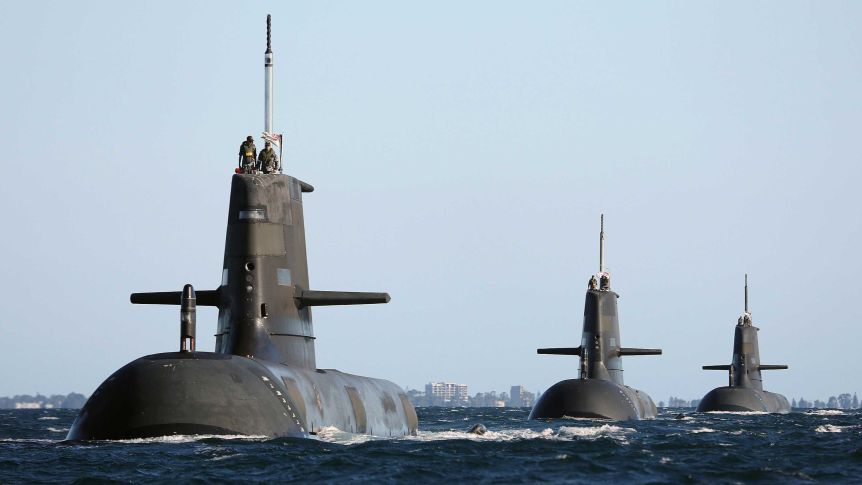
But this is what the Turnbull government did when it announced in September 2016 that the majority French government-owned Naval Group would build 12 large submarines in Adelaide. The first sub is unlikely to be operational until the late 2030s and the last one until well after 2050. It is even harder to understand why Turnbull endorsed the extraordinarily dangerous role for Australian submarines of helping the US conduct surveillance and possible combat operations within the increasingly crowded waters of the South China Sea.
And while the Morrison government repeatedly claims that Australia’s defence force has a “sovereign” capability, in reality we are locked in “all the way” with the USA. US secrecy prevents Australia from repairing key American components of both the Collins and Attack class submarines’ complex computerised systems. Ominously, an earlier Coalition government gave Lockheed Martin the contract to integrate these systems into the Attack subs. This is the same company that wasted billions on a dud computerised system for the US made F-35 fighter planes.
Called the Attack class, the conventionally powered submarines to be built in Adelaide by Naval will rely on an unfinished design based partly on France’s Barracuda nuclear submarines.
Their official cost has already blown out from an initial $50 billion to $90 billion. It was revealed earlier that Defence officials knew in 2015 that the cost of the fleet had already blown out by $30 billion to $80 billion, yet continued to state publicly that the price tag was $50 billion. Life-cycle costs are expected to be around $300 billion.
Current tensions about maritime boundaries in the South China Sea may well be resolved before the fleet is delivered. Further billions will also have to be spent closing the gap in capability created by the retirement of our six Collins class submarines due between 2026 and 2038, well before the first six Attack class are operational. Australia’s expenditure of $90 billion will be enough to put just one Attack class submarine in the South China Sea at a time.
The other submarines will be making the 13,000-kilometre trip up there and back, being repaired and refurbished, or be committed closer to Australia. Australian subs in the South China Sea will be integrated into US forces and will be relying on them for operational and intelligence data. In an escalating clash, accidental or otherwise, they will be expected to follow orders from US commanders. Again, so much for Australia’s sovereignty.
There is no compelling strategic reason why Australian submarines should travel that onerous distance to support the US in the South China Sea. Contrary to popular belief, the vast majority of Australia’s trade with North Asia does not go through the that Sea. Nor does China impose barriers to commercial navigation, much of which involves its own trade. China has adopted a defensive anti-access/area denial strategy to control approaches to its homeland, building up an array of forces and sensors. This is in response to the US deploying sensors below and above the sea to prevent Chinese forces passing through choke points in the area to the broader ocean. While China’s actions are seen as aggressive, the US would never tolerate China laying sea-bed sensors and deploying submarines around its naval bases on the West Coast of America.
The Pentagon focuses on always knowing the whereabouts of all Chinese submarines, especially its two nuclear-armed ballistic missile-carrying subs based at Hainan Island. The Americans’ goal would be to destroy these subs at the start of any potential war, however, China’s nuclear armed missiles on land or sea are essential as a deterrence because the US has not ruled out first US first nuclear strike.
Australia’s submarines aren’t nuclear powered, which means they have to come to the surface to charge their batteries every few days. This leaves them open to being detected by increasingly sophisticated sensors and then destroyed. This risk can be greatly reduced by using air independent propulsion; for example, fuel cells, meaning submarines don’t have to resurface for up to six weeks, but the Australian Navy stubbornly refuses to use this lifesaving technology. It also resists using modern batteries that are lighter and go further than lead acid ones.

Submarines could make an important contribution to the nation’s defence by operating above and below the island chain to Australia’s north to deter a naval force intending to attack Australia. This does not require ultra large submarines. A report released in March by the executive director of Insight Economics, Jon Stanford, (right) makes a persuasive case for not proceeding with the Attack class. The report, funded by electronics retailer Garry Johnson, was commissioned by the think tank Submarines for Australia.
One solution might be to design and build a modern version of the 3,100 tonne Collins instead of the 4,500 tonne Attack class submarines. This option has not been costed. A cheaper alternative would be to extend the life of the six existing Collins class submarines. The think tank Submarines for Australia has costed this at $15 billion, with the Australian Strategic Policy Institute costing it at $20 billion. A much less costly option would be to build proven, high-performance submarines to be based at two harbours in northern Australia and scrap the reckless commitment to integrate them with US nuclear submarines in the South China Sea.
The Singapore Navy is getting new 2000 tonne submarines from the biggest maker of quality conventional submarines, Germany’s Thyssekrupp Marine Systems. Called the Type 218SG, they have hydrogen fuel cells and lithium ion batteries. They are low maintenance, can carry land-attack missiles or the German IDAS missile, which can hit ships and sub-hunting helicopters. The cost would be about $7 billion for six and just over $13 billion for 12, including spares and crew training. A high degree of automation also means they require a crew of just 28 that can rotate on eight-hour shifts instead of the usual 12 hour shifts for most submarines. Compare this with the Attack class requirement of a crew of 63, at a time when it is not easy to attract the large number of submariners required.
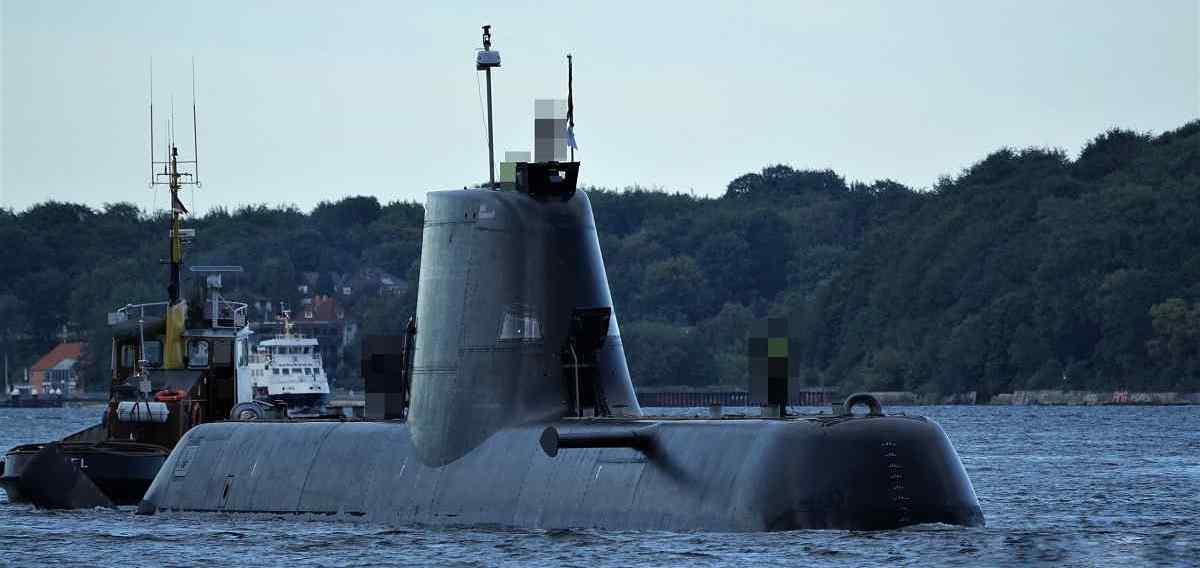
Perhaps the best argument, however, for not wasting $90 billion on the Attack class is that cheap underwater drones will soon have an important military role particularly suited to use from bases in northern Australia.
My wife is blaming me for ruining her birthday.
That’s ridiculous, I didn’t even know it was her birthday.
Rudolph – the red nosed reindeer.
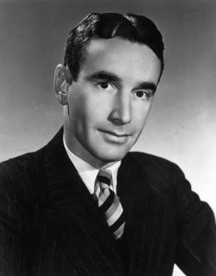
Once upon a time, a man named Robert L. May, depressed and broken hearted, stared out of his draughty apartment window into the chilling December night (obviously didn’t live in Qld - tb). Bob's wife, Evelyn, was dying of cancer. His 4-year-old daughter Barbara couldn't understand why her mommy could never come home. It had been the story of Bob's life. Life always had to be different for Bob. When he was a kid, Bob was often bullied by other boys. He was too little at the time to compete in sports. He was often called names he'd rather not remember. From childhood, Bob was different and never seemed to fit in.
Bob, after completing college, married his loving wife, Evelyn and was grateful to get a job as a copywriter at the Timothy Eaton Department Store in Toronto during the Great Depression. Then he was blessed with his little girl. But it was all short-lived. Evelyn's bout with cancer stripped them of all their savings and now Bob and his daughter were forced to live in a two-room apartment in the poorer area of Toronto. Evelyn died just days before Christmas in 1938.
Bob struggled to give hope to his child, for whom he couldn't even afford to buy a Christmas gift. But if he couldn't buy a gift, he was determined a make one – a storybook! Bob had created an animal character in his own mind and told the animal's story to little Barbara to give her comfort and hope. Again and again, Bob told the story, embellishing it more with each telling.
The story Bob May created was his own autobiography in fable form. The character he created was a misfit outcast like he was. The name of the character? A little reindeer named Rudolph, with a big shiny nose. Bob finished the book just in time to give it to his little girl on Christmas Day. But the story doesn't end there.
The general manager of the T. Eaton Store caught wind of the little storybook and offered Bob May a nominal fee to purchase the rights to print the book. They went on to print “Rudolph the Red-Nosed Reindeer” and distribute it to children visiting Santa Claus in their stores. By 1946, Eaton's had printed and distributed more than six million copies of Rudolph. That same year, a major publisher wanted to purchase the rights from Eaton's to print an updated version of the book.
In an unprecedented gesture of kindness, the CEO of Eaton's returned all rights back to Bob May. The book became a best seller. Many toy and marketing deals followed and Bob May, now remarried with a growing family, became wealthy from the story he created to comfort his grieving daughter. But, the story doesn't end there either.
Bob's brother-in-law, Johnny Marks, made a song adaptation to Rudolph. Though the song was turned down by such popular vocalists as Bing Crosby and Dinah Shore, it was recorded by the singing cowboy, Gene Autry. “Rudolph the Red-Nosed Reindeer” was released in 1949 and became a phenomenal success, selling more records than any other Christmas song, with the exception of "White Christmas."
I saw a poor old lady fall over today in the car park. At least I presume she was poor, she only had $1.20 in her purse.
